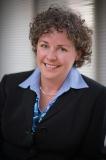 —Lauren Clark, RN, PhD
—Lauren Clark, RN, PhDI’m a nurse, and like a lot of nurses I am white and female. Growing up in Tucson, Arizona, I knew that my nursing care was limited by my lack of Spanish-language ability. Aside from language skills, I also needed to understand of health beliefs and practices among the cultural groups I cared for.
How did I work toward more cross-cultural clinical skill and competence? I started by honing my clinical skills on a med-surg floor in a busy university hospital for a few years. Then I completed a master’s degree in community health nursing and worked in home health. I learned Spanish, worked with Mexican Americans and newer Mexican immigrants in the barrios of Tucson and Denver. I sought out clinical experiences on the Tohono O’Odham reservation and the Northern Cheyenne Reservation. Then I completed a PhD in nursing and earned an academic certificate in medical anthropology.
Taken together, this additional educational and clinical preparation gave me the knowledge and wisdom to be a more effective nurse. My diversity work involves research with diverse populations on health disparity issues. With my interdisciplinary colleagues we are focusing on disabling conditions as a diversity topic. We’re creating a new way to measure health disparities that will work for lower-literacy people with intellectual disabilities. We are also conducting research on social networks of people with intellectual disabilities. My research with Mexican Americans on health disparity topics answered questions about social support, child feeding, and childhood obesity. Our University of Utah research teams are exploring new health disparity topics with Mexican American and Mexican immigrant families, including women’s pelvic organ prolapse and self-management of childhood asthma. Working with diverse families reminds me of the many ways that health and illness are shared human experiences. The cultural resources to respond to health and illness vary in patterned ways.
The University of Utah College of Nursing is a great place to learn how to do research with diverse populations, and also a great place to learn how to provide direct care. Individualizing our approach to patients from different language, race, ethnic, religious, gender orientation, or geographic areas remind us of some of the diversity facets we consider as nurses. It’s a lifelong professional journey!